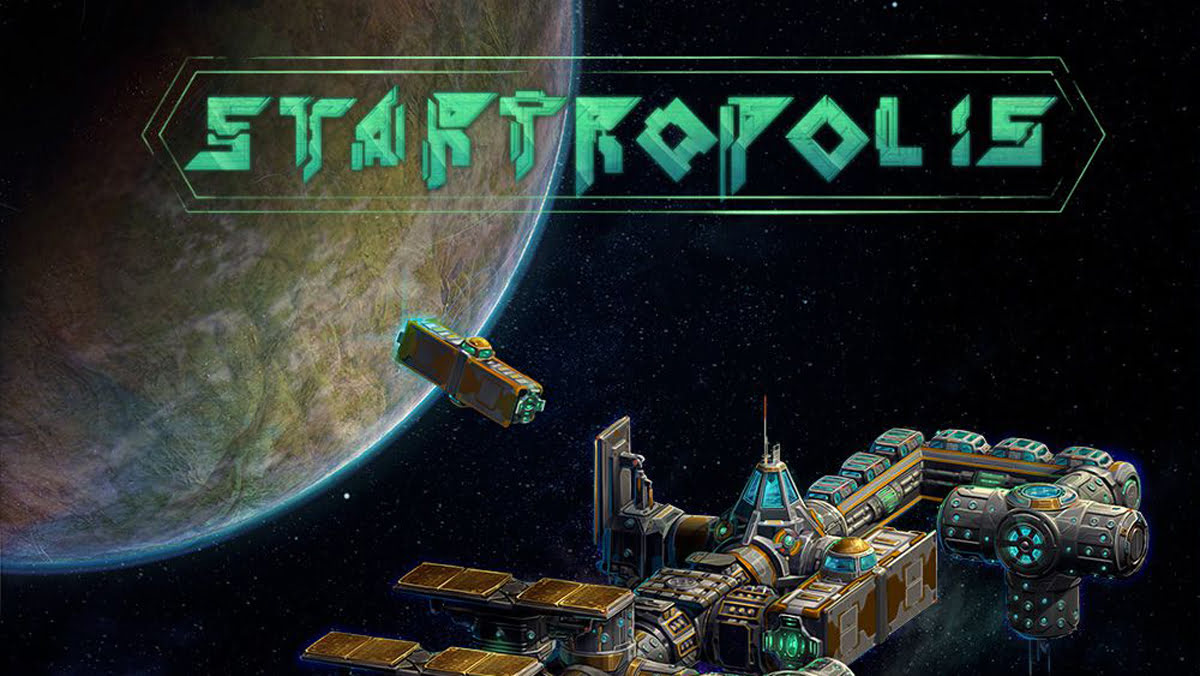 The Asteroid Consolidated Mining Enterprise (ACME) has found an asteroid with valuable mineral deposits, enough to sustain an entire space station. Now, you and other investors are constructing Startropolis, a corporate space station with market centers, habitation modules, and more.
The Asteroid Consolidated Mining Enterprise (ACME) has found an asteroid with valuable mineral deposits, enough to sustain an entire space station. Now, you and other investors are constructing Startropolis, a corporate space station with market centers, habitation modules, and more.
What Is Startropolis?
Startropolis is a game for 2 to 4 players, ages 8 and up, and takes about 15 minutes per player. It’s currently seeking funding on Kickstarter, with a pledge level of $49 for a copy of the game, or $79 to include the stretch goals pack. The game is pretty easy to learn, so I think the age rating is about right.
New to Kickstarter? Check out our crowdfunding primer, and visit our Kickstarter curated page for more projects we love.
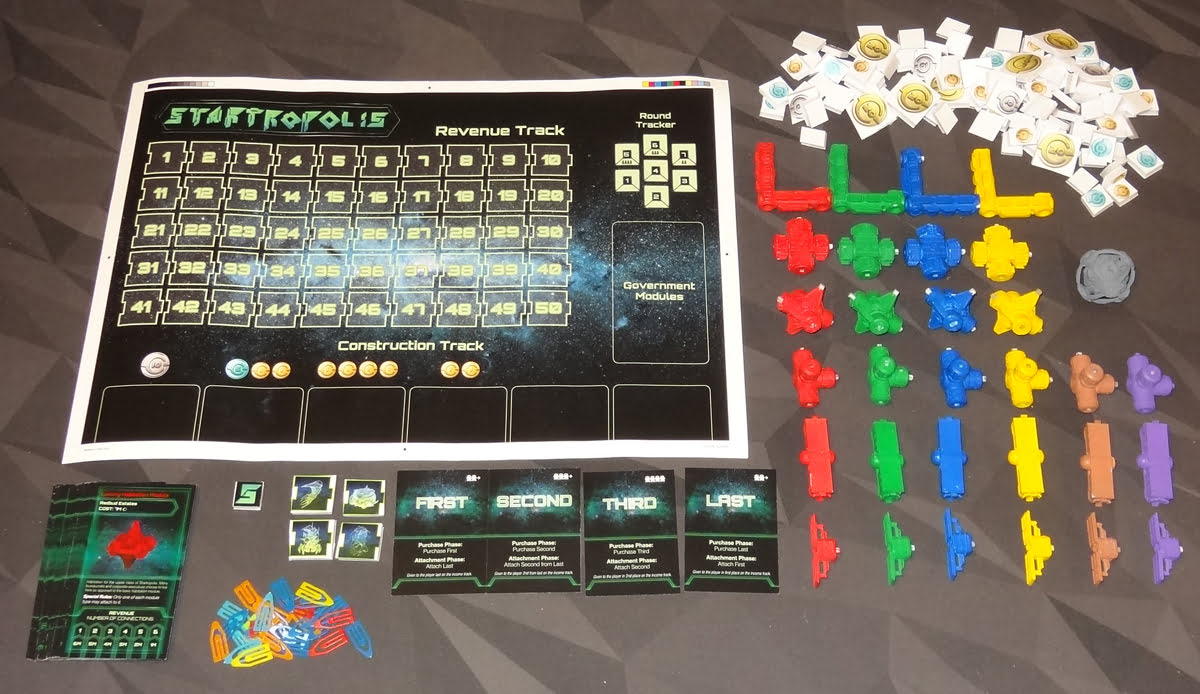
Startropolis Components
Note: My review is based on a prototype copy, so it is subject to change and may not reflect final component quality. For example, the prototype game board is just a large poster and the coins and player tokens are foam core, and the plastic modules were 3D printed instead of molded plastic.
Here’s what’s included:
- Game board
- Round Tracker token
- 4 Player Revenue tokens
- 4 Turn Order cards
- 31 Modules:
- 1 Core Module
- 4 Civic Center Modules
- 4 Market Center Modules
- 4 Luxury Habitation Modules
- 6 Basic Habitation Modules
- 6 Supply Modules
- 6 Solar Panel Modules
- 30 Module cards
- 30 Revenue sliders
- Coins
- Quick Reference boards
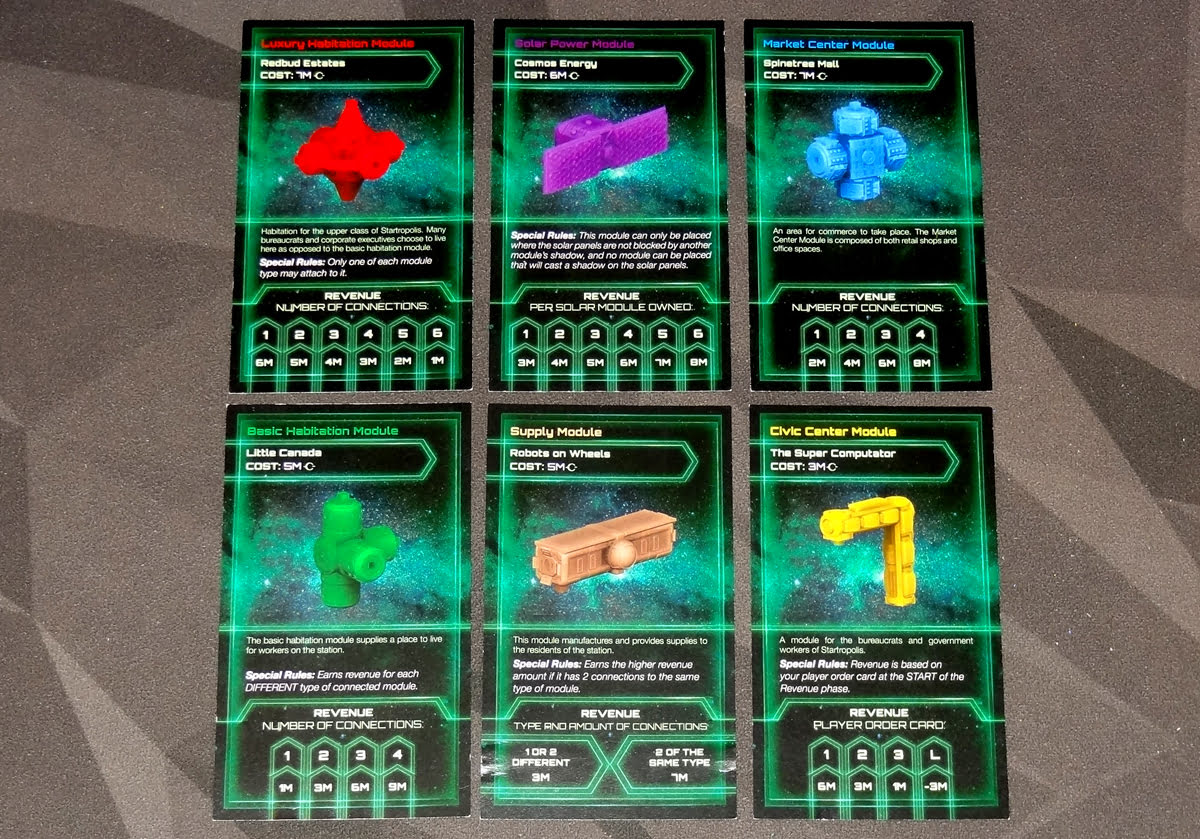
The base game includes six different types of modules (aside from the asteroid core); there are multiple copies of each module in different colors, and there’s an accompanying card for each module. The reason for the colors is so that if you and an opponent each buy the same type of module, you can tell which one is yours, since revenue may depend on what’s connected to your module.
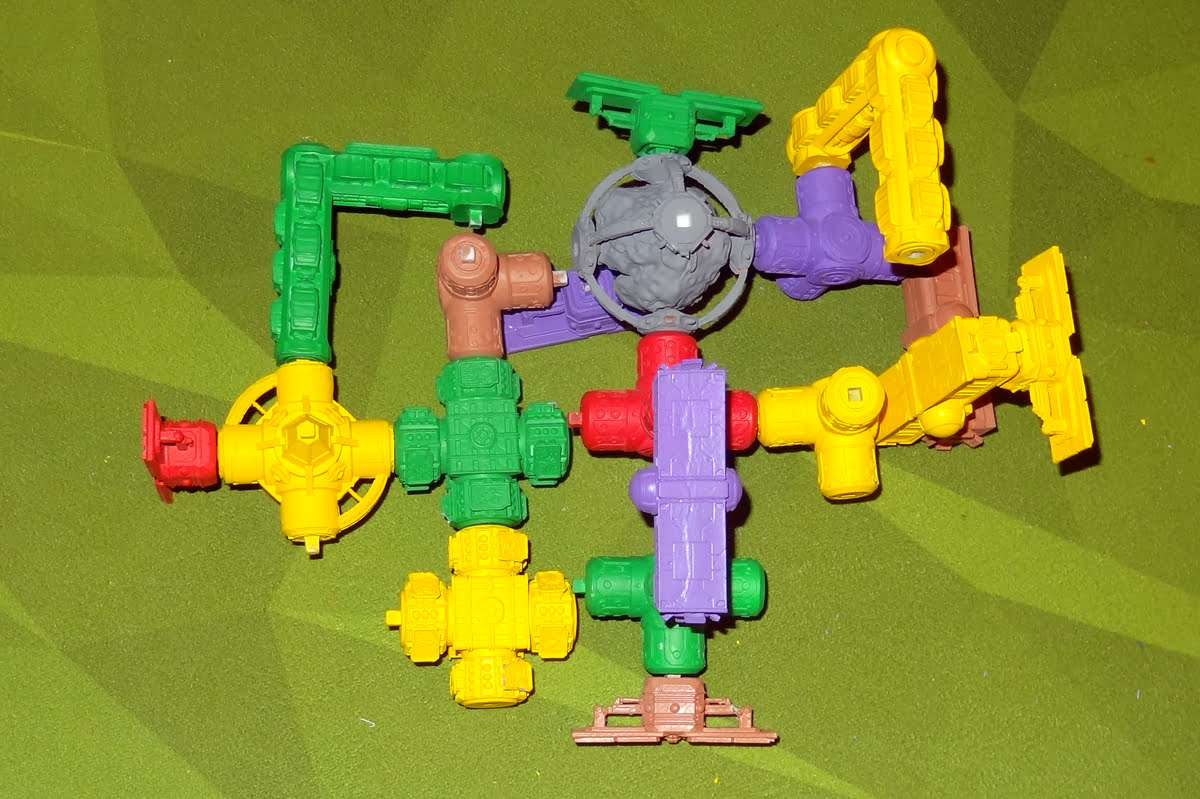
A note about the plastic modules: these plastic bits are really going to be what makes or breaks Startropolis—literally. The components I had were a 3D-printed prototype, but since they were printed all in white, the factory spray-painted them so they could be distinguished. Unfortunately, that meant the pegs and plugs got paint in them as well, which interferes with the pieces fitting together. The final version will be molded in different color plastic, so that shouldn’t be an issue, but it meant that it could be hard to test as a prototype. I scraped paint off some of the pegs, which generally helped, but it meant that my experience of the game was not entirely what the designers are aiming for.
If the plastic pieces in the final version fit together and hold together well, then Startropolis will have a fantastic toy factor on top of the gameplay; if they don’t, then most players may not find it worth the trouble to see whether they enjoy the game itself. The bits themselves look great, though, with fun little details, and if you’re the sort of person who paints your miniatures, I think they could be pretty amazing.
Your revenue is tracked on the module cards using clips. My prototype just used little plastic paper clips, though the version shown in the Kickstarter video uses slider clips instead. I’m not sure what the final version will be, though I know some of my gaming group didn’t like the idea of putting paper clips on card edges because of the way it bends them.
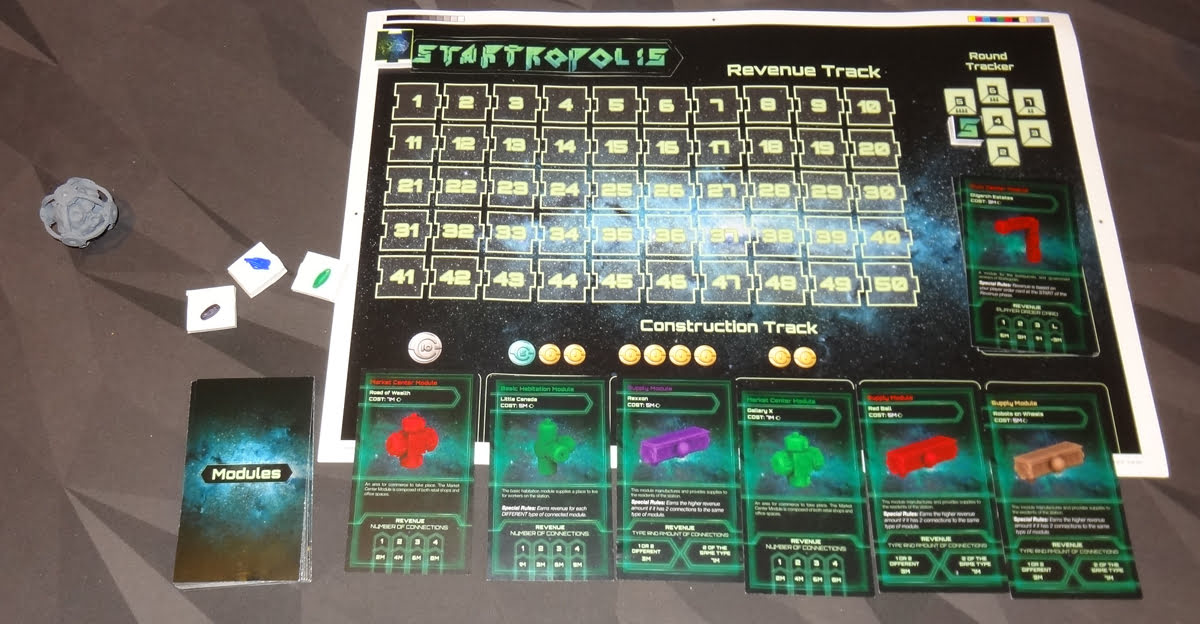
How to Play Startropolis
You can download a copy of the rulebook on the Kickstarter page.
The Goal
The goal of the game is to have the most credits (money) at the end of the game.
Setup
Place the board in the center, with the round tracker on round 1 and all player revenue tokens off the side of the board. Place the Civic Center module cards in the indicated spot on the board. Shuffle the rest of the module cards, and deal out six in the market. (In a 2-player game, you’ll remove 2 solar modules and a luxury module from the deck.)

Each player starts with 14M credits. Randomly deal the player order cards. (Always use the “first” and “last” cards, and then use “second” and “third” as necessary depending on the number of players.)
Set the Core module in the center of the building area, with all of the other modules nearby for a supply.
Gameplay
Each round has three phases: Purchase, Attachment, and Revenue. The purchase phase is done in turn order, and the attachment phase is done in reverse turn order, according to the player order cards.

Purchase
Choose one of the modules available in the market to purchase. Each module has a cost, but only the two on the far right are already constructed. If you purchase any of the others, you will also have to pay the rush fee (shown above the card on the board).
Instead of purchasing from the market, you may also purchase a Civic Center module instead. Finally, you may choose not to purchase a module at all, and instead gain 5M credits from the bank.
If you purchase a Civic Center module or take income, you still discard any module card from the market, paying only the rush fee if applicable.
After you purchase, slide all the cards to the right to fill in the gap, and then draw a new card to refill the market. Each player gets to purchase one module in turn order.
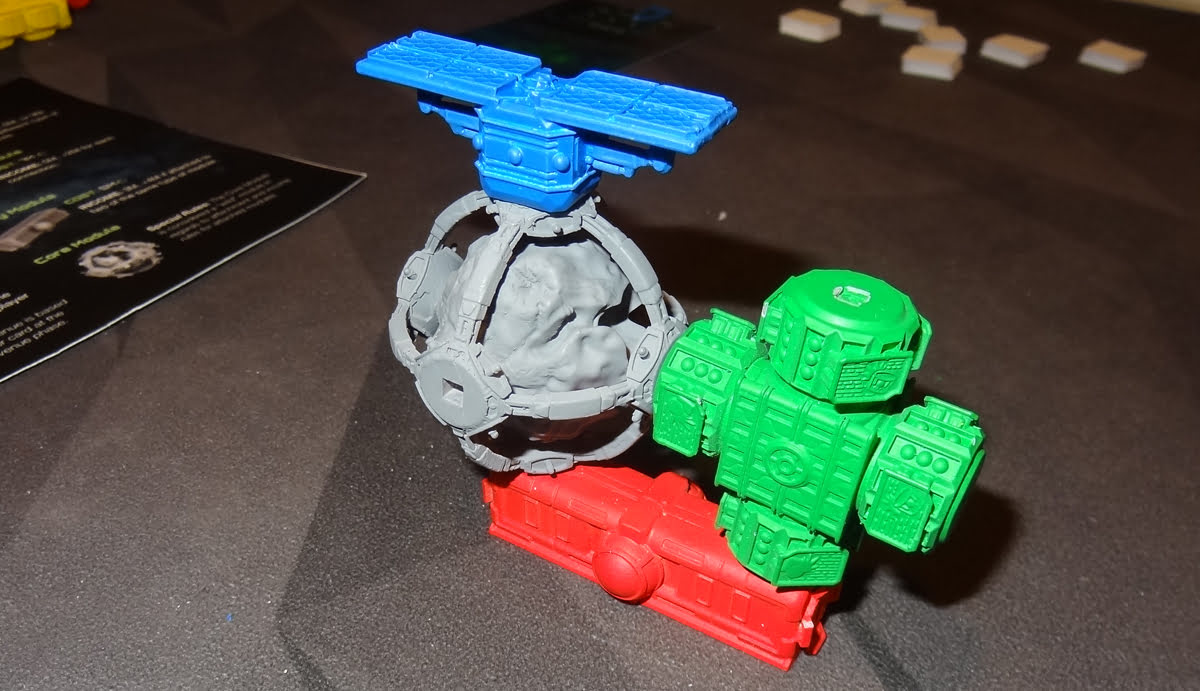
Attachment
In reverse turn order, each player may now attach their module to the space station. If there’s no valid location or you simply choose not to, you hold your module until the next turn, but you do not earn revenue unless the module is attached.
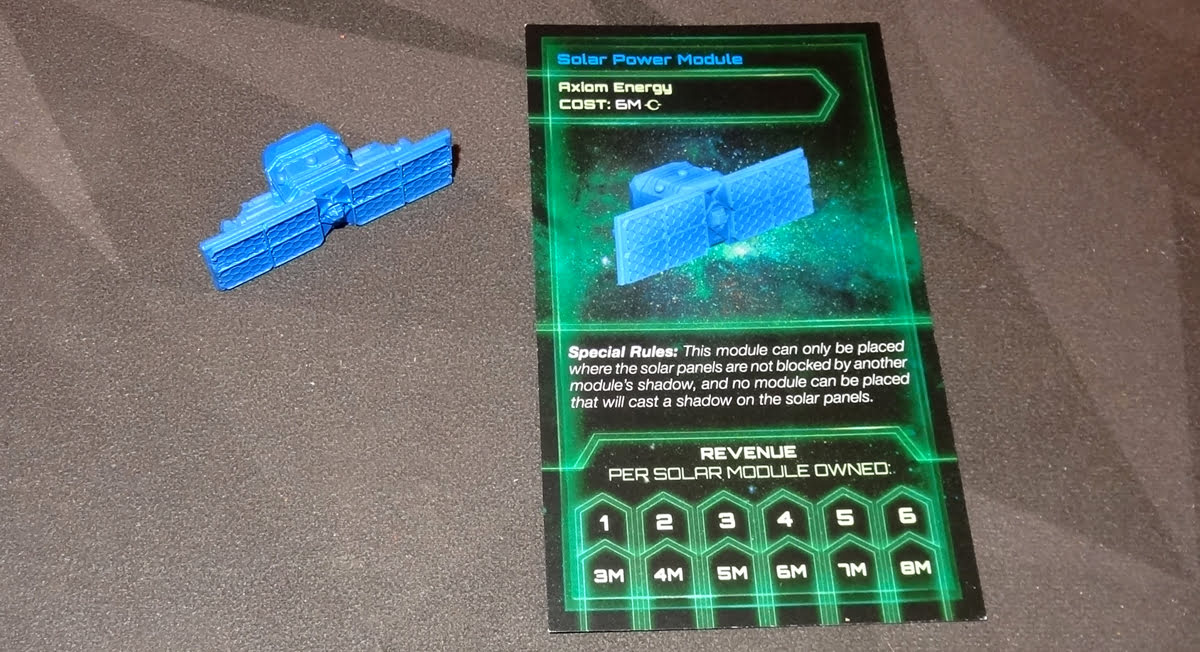
The modules have different restrictions and revenue amounts based on connections, shown on the cards. Here’s a simplified run-down:
- Civic Center Modules: Earn more revenue if you’re later in turn order; loses revenue if you’re first
- Market Center Modules: More connections = more revenue
- Luxury Habitation Modules: More connections = less revenue; can only connect to one of each module type
- Basic Habitation Modules: Connect to different types of modules for more revenue
- Supply Modules: More revenue if connected to two of the same type
- Solar Panel Modules: More revenue if you own more solar panels; cannot build past solar panels
Solar panels will limit the space station, because you cannot build anything beyond the plane in which the panel is facing.
As modules are attached to the station, everyone should adjust their revenue trackers accordingly. The game board has a tracker for you to indicate your total current revenue.
Note: if you have leftover modules from previous turns, you may attach them after everyone has had a turn to attach one module.

Revenue
Everyone collects credits from the bank based on their current revenue level.
Then pass out the turn order cards: the lowest revenue gets to go first, and the most revenue gets to go last.
Game End
The game ends after a set number of rounds, as indicated on the round tracker. (7 rounds for 2 players, 6 rounds for 3 players, and 5 rounds for four players.) During the last round, all modules are half price (though rush fees are not halved).
After the last revenue phase, the player with the most credits wins. (Note that it’s not necessarily the player who is highest on the revenue track.)

Why You Should Play Startropolis
If you like plastic miniatures in your games, or especially if you like plastic toys that snap together and make bigger things, Startropolis is going to scratch that itch. The space station modules are fun and the space stations can get huge and wacky as everyone competes to maximize their revenue streams. That’s the toy aspect, anyway, and I’d say that Startropolis succeeds there. (Pending, of course, final plastic pieces that fit together properly, as mentioned above.)
But how’s the game, you ask? Well, it can’t be entirely disconnected from the toy part, because the game is a fairly simple ruleset that becomes meaningful in the way that the various modules connect to each other in 3D space. I can kind of imagine a simpler version of this game that used cardboard tiles instead of plastic bits, but you would be limited to two dimensions. Making the three-dimensional connections opens up a huge number of possibilities for construction, which is key to Startropolis.
Most of the modules don’t have specific restrictions on connections (other than the obvious “pegs fit into plugs” rule), except for two: the luxury habitation modules can only be connected to one of each type of module, and the solar panels close off development in that direction, so they can be used to limit expansion. For instance, in the photo below, the blue and purple panels prevent the space station from growing “up,” and the red solar panel in the foreground prevents construction in the direction toward the camera.
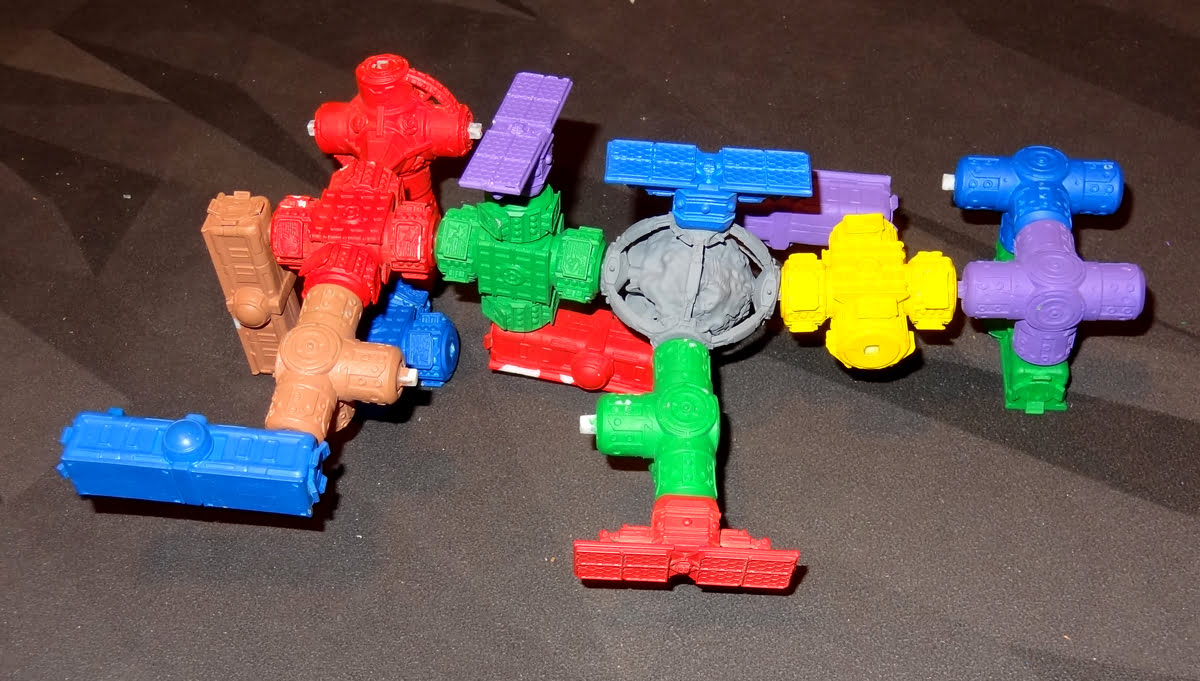
Most of the building restrictions are instead economic. If you have a basic habitation module, you want to connect it to as many different types of modules as possible—so that means you might avoid connecting a duplicate even though it’s allowed. The supply modules only have two connections, but significantly higher revenue if both ends are connected to the same type of module. If you can place a module that increases your revenue and decreases an opponent’s revenue at the same time, that’s a bonus!
Startropolis definitely rewards players who are good at spatial reasoning. You want to be able to look around at the various modules people have purchased and figure out not only the best place to put your own module, but also what spaces may help your opponents the most in case you want to block those locations. The various shapes of the modules means that sometimes you can prevent a connection without actually taking up that peg or plug, simply because you’ve got a piece that gets in the way.
It’s important to remember the turn order cards—and the reverse turn order for the attachment phase—though it can be easy to overlook if you’re accustomed to playing in clockwise order around the table. Having the lowest revenue lets you get first pick at the market but attach last. Having the highest revenue doesn’t guarantee that you’ll win (if you consistently spend more than other players) but if you can stay ahead of the pack, it can also be hard to overcome that lead.
The Civic Center modules are a tricky beast: you can earn as much as 6M revenue if you’re in last place on the revenue track, but if you pull ahead, the Civic Center modules will cost you 3M. Since they’re always available to purchase, separate from the market, you’ll never be forced to buy one, but the strategy for using them isn’t easy to figure out. (At least, I haven’t gotten the hang of it yet.)
I do like that there’s a thematic connection for most of the modules and how they score: luxury habitation modules don’t want to be connected to the riffraff, so they earn more if they’re isolated. Meanwhile, the basic habitation modules want to have access to as many different things as possible, so they earn for different connections. The module cards also have unique names for each module, and there are some fun names that help reinforce the theme as you play.
I haven’t gotten to play Startropolis very often—largely because the quality of the 3D-printed prototype has made it more fiddly to manipulate than it should—but I do enjoy the spatial puzzle of looking for the best spots, and I like the way the station looks at the end of the game, a giant kludged-together contraption I can imagine floating in space. I do hope that the final modules work well, because I think it’ll be a lot of fun. The game goes pretty quickly and it was very easy to teach, but there’s definitely room for strategizing both in the purchasing and attaching.
Overall, I think I’d recommend Startropolis for those who like the idea of construction and the puzzle of maximizing revenue. If you don’t enjoy spatial reasoning puzzles, it’s probably not a good fit for you. Also, stay tuned with the Kickstarter page to see what stretch goals are unlocked, because there will probably be additional modules (which I haven’t seen yet) added to the game if those are funded.
For more information or to make a pledge, visit the Startropolis Kickstarter page!
Click here to see all our tabletop game reviews.
![]() To subscribe to GeekDad’s tabletop gaming coverage, please copy this link and add it to your RSS reader.
To subscribe to GeekDad’s tabletop gaming coverage, please copy this link and add it to your RSS reader.
Disclosure: GeekDad received a copy of this game for review purposes.
